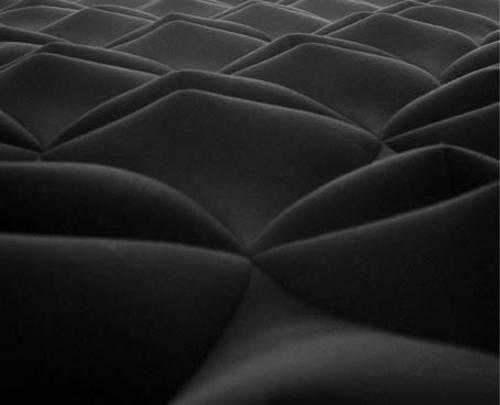
Today's artist requires a super hero Teflon exterior around the sensitive artistic ego to survive the competitive commercial art market. Some artists float to the top, in demand and seemingly invincible against market ebbs and flows. But for most, work is made obsessively and in poverty with no guarantee of hitting the big-time and becoming a name. The artist is faced with the ultimate ambivalent choice: play the market game, making saleable work in line with current designer and collecting trends, or remain true to the poverty-stricken-genius paradigm of art for art's sake.
Alasdair Macintyre is a Brisbane artist mining the anxiety and everyday realities of the artistic life. His current show at Ryan Renshaw, Splatsville: Memoirs of a Failed Painter is a case in point. The works focus on the triumphs and failures of the artistic journey, particularly as a sculptor forgoing the traditional lure of the paintbrush. A 2006 essay by the artist on his website poses the problem of creating in the face of art history: 'The problem with any artist today, in any Western civilisation, is the incapability to be anything other than a poor relation to what has gone before.'
It would seem Macintyre by his own admission has given up on the idea of making high art. His polished mini-dioramas of polymer clay are reminiscent of a child's toy collection, a witty idea presented as one-liner in the vein of 90's Post Modern jokesters such as Richard Prince. However, the closer one looks the more transparent is the artist's vulnerability under his shiny moulded exteriors - it is a mistake to think that these works lack depth or sophistication.
Macintyre's cartoon self-portrait character is the hero of the exhibition, defender of artists everywhere, his medium of choice a sculptural shield against the art world and the tortures of the creative process - loyal white - hero-dog by his side for each miniature dilemma. The homogenous toy character portrayal suggests Macintyre is unscathed by art world reality, but do we believe him?
In the first work encountered, Zeitgeist Avenue (2008), the artist is a beggar, typical of the homeless seen on inner city streets, seeking artistic scraps of genius as opposed to food and shelter. Splatsville is not as nice a place as it first appears. Many of the works in the exhibition provide varying viewpoints on the art-life theme, with certain works packing more punch than others. Two standouts in the exhibition are Artist Statement (2008), and The Belly of the Whale (2008). References to stories such as Pinocchio and Moby Dick allow easy access for the non-art audience to understand Macintyre's point, as well as allowing a chuckle for the fellow artist. Quotation of pop culture in art is nothing new, and Macintyre deliberately references the canon of the past as well as the present. The artist is aware of his sculptural place in art history - Marcel Duchamp's well-quoted urinal takes angelic flight in Chasing the Muse (2008), the basest human utility now 'ironically' canonised high-art.
Macintyre's spaces are littered with paint splattered canvases that act as mountains to be conquered in Peak Experience, or as a liferaft keeping the artist afloat in Marooned (2008). Painting remains the ghost haunting each of Macintyre's sculptures. Fun clay pop sculpture is the artist's defence against true combat with the hallowed spectres of paint, a battle he has declared he can only lose.
But does it matter whether Macintyre conquers the high art canon in the end? This show is fun and lighthearted, conceptual without being elitist. Macintyre is not simply playing the market game. His sculptures, whilst executed in pop culture aesthetics, address issues close to the heart of the artist rather than the audience, and so we see the artist on the edge of the market production divide. Time will tell whether this hero can save the artists of the world, or remains doomed to live out Groundhog Day in Splatsville.












